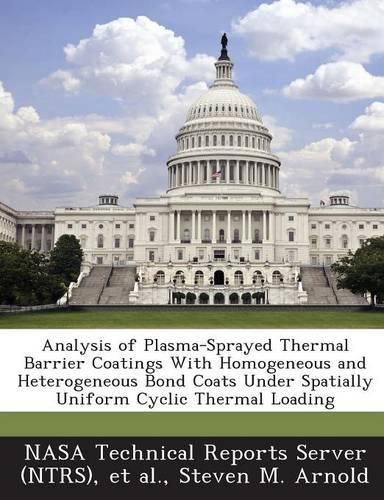Readings Newsletter
Become a Readings Member to make your shopping experience even easier.
Sign in or sign up for free!
You’re not far away from qualifying for FREE standard shipping within Australia
You’ve qualified for FREE standard shipping within Australia
The cart is loading…






This report summarizes the results of a numerical investigation into the spallation mechanism in plasma-sprayed thermal barrier coatings observed under spatially-uniform cyclic thermal loading. The analysis focuses on the evolution of local stress and inelastic strain fields in the vicinity of the rough top/bond coat interface during thermal cycling, and how these fields are influenced by the presence of an oxide film and spatially uniform and graded distributions of alumina particles in the metallic bond coat aimed at reducing the top/bond coat thermal expansion mismatch. The impact of these factors on the potential growth of a local horizontal delamination at the rough interface’s crest is included. The analysis is conducted using the Higher-Order Theory for Functionally Graded Materials with creep/relaxation constituent modeling capabilities. For two-phase bond coat microstructures, both the actual and homogenized properties are employed in the analysis. The results reveal the important contributions of both the normal and shear stress components to the delamination growth potential in the presence of an oxide film, and suggest mixed-mode crack propagation. The use of bond coats with uniform or graded microstructures is shown to increase the potential for delamination growth by increasing the magnitude of the crack-tip shear stress component.
$9.00 standard shipping within Australia
FREE standard shipping within Australia for orders over $100.00
Express & International shipping calculated at checkout
This report summarizes the results of a numerical investigation into the spallation mechanism in plasma-sprayed thermal barrier coatings observed under spatially-uniform cyclic thermal loading. The analysis focuses on the evolution of local stress and inelastic strain fields in the vicinity of the rough top/bond coat interface during thermal cycling, and how these fields are influenced by the presence of an oxide film and spatially uniform and graded distributions of alumina particles in the metallic bond coat aimed at reducing the top/bond coat thermal expansion mismatch. The impact of these factors on the potential growth of a local horizontal delamination at the rough interface’s crest is included. The analysis is conducted using the Higher-Order Theory for Functionally Graded Materials with creep/relaxation constituent modeling capabilities. For two-phase bond coat microstructures, both the actual and homogenized properties are employed in the analysis. The results reveal the important contributions of both the normal and shear stress components to the delamination growth potential in the presence of an oxide film, and suggest mixed-mode crack propagation. The use of bond coats with uniform or graded microstructures is shown to increase the potential for delamination growth by increasing the magnitude of the crack-tip shear stress component.